| Listing 1 - 10 of 19 | << page >> |
Sort by
|
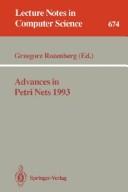
ISBN: 0387566899 0387745238 0387745262 128038056X 9786613558473 3540566899 3540476318 Year: 1993 Volume: 674 Publisher: Berlin Springer
Abstract | Keywords | Export | Availability | Bookmark
 Loading...
Loading...Choose an application
- Reference Manager
- EndNote
- RefWorks (Direct export to RefWorks)
ERP: The Dynamics of Supply Chain and Process Management is a complete updating and expansion of Avraham Shtub’s award-winning 1999 text Enterprise Resource Planning (ERP): The Dynamics of Operations Management. New chapters, written together with his co-author Reuven Karni, cover enterprise process modeling; design of business processes; a complete revision of the original chapter on the integrated order-fulfillment process using ERP; business process management; business process improvement; and a new appendix on simulating process life cycles: using serious games as teaching aids. MERPTM is designed to facilitate the teaching of integrated operations of a business organization with a focus on corporate performance management. It reflects a fully live environment and allows students to participate in a virtual organization made real and dynamic as minute-by-minute business events and conditions unfold. This book is ideal for use in academic and executive programs aimed at teaching students how integrated systems work. It is suitable as a textbook for the basic MBA Operations Management course or as a text for courses on ERP systems and the development of business processes. In an industrial engineering program it could serve to give students their first, and perhaps only, introduction to business issues like market demand and supplier relationships. "I used Avy Shtub’s award-winning 1999 book on ERP and the accompanying Operations Trainer software in several leading MBA programs in the United States and Europe. Most of the courses were delivered in traditional classroom settings but some of them were offered fully online. The current revision and second edition of the book, co-written with Reuven Karni, adds new materials with an emphasis on services and business processes, provides excellent, detailed examples, and revises old ones of the previous edition. The book is nicely complemented and enhanced by the addition of a unique, dynamic, online simulation package MERP™ that represents a major upgrade to the old, PC-based Operations Trainer. In my reading, the book’s first main theme, Integrated Production and Order Management (IPOM), is a different, and perhaps more valid, take on the many issues associated with Supply Chain Management. The authors touch on all facets and issues of Operations and Supply Chain Management and provide a theory-based and sound, practice-proven approach to the problems present in any organization. The second main theme covers the design and improvement of enterprise and business processes, touching on facets and issues relating to process-based enterprise management. I would highly recommend the book and the accompanying software to any instructor teaching Operations/Supply Chain Management, Business Process Management or Industrial Engineering." -- Gyula Vastag (Corvinus University of Budapest, Hungary).
Dynamics. --- Management information systems. --- Management. --- Production management. --- Production management --- Management information systems --- Management Theory --- Industrial & Management Engineering --- Mechanical Engineering --- Management --- Engineering & Applied Sciences --- Business & Economics --- Business logistics. --- Supply chain management --- Manufacturing management --- Réseaux de Pétri --- Réseaux de Pétri --- Business. --- Leadership. --- Operations research. --- Decision making. --- Industrial engineering. --- Production engineering. --- Engineering economics. --- Engineering economy. --- Business and Management. --- Operations Management. --- Operation Research/Decision Theory. --- Business Strategy/Leadership. --- Engineering Economics, Organization, Logistics, Marketing. --- Industrial and Production Engineering. --- Computer architecture. Operating systems --- Industrial management --- Logistics --- Machine theory --- Petri nets --- Automates mathématiques, Théorie des --- Congresses --- Congrès --- Computer network architectures. --- Computer science. --- Computer software. --- Logic design. --- Computer Communication Networks. --- Computer System Implementation. --- Computation by Abstract Devices. --- Algorithm Analysis and Problem Complexity. --- Logics and Meanings of Programs. --- Processor Architectures. --- Design, Logic --- Design of logic systems --- Digital electronics --- Electronic circuit design --- Logic circuits --- Switching theory --- Software, Computer --- Computer systems --- Informatics --- Science --- Architectures, Computer network --- Network architectures, Computer --- Computer architecture
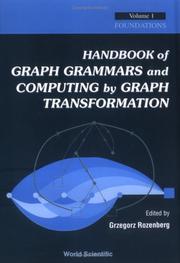
ISBN: 1281869589 9786611869588 9812384723 0585451435 9780585451435 9781281869586 9789812384720 9810228848 9789810228842 9810240201 981024021X Year: 1997 Volume: 1 Publisher: Singapore New Jersey World Scientific
Abstract | Keywords | Export | Availability | Bookmark
 Loading...
Loading...Choose an application
- Reference Manager
- EndNote
- RefWorks (Direct export to RefWorks)
Graph grammars originated in the late 60s, motivated by considerations about pattern recognition and compiler construction. Since then the list of areas which have interacted with the development of graph grammars has grown quite impressively. Besides the aforementioned areas it includes software specification and development, VLSI layout schemes, database design, modeling of concurrent systems, massively parallel computer architectures, logic programming, computer animation, developmental biology, music composition, visual languages, and many others.The area of graph grammars and graph tra
Graph grammars. --- Graph theory --- Grammars, Graph --- Formal languages --- Data processing. --- Graph grammars --- Data processing --- Graph theory - Data processing
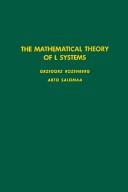
ISBN: 0125971400 9780080874067 0080874061 1281768898 9786611768898 9780125971409 Year: 1980 Volume: 90 Publisher: New York (N.Y.): Academic press
Abstract | Keywords | Export | Availability | Bookmark
 Loading...
Loading...Choose an application
- Reference Manager
- EndNote
- RefWorks (Direct export to RefWorks)
The mathematical theory of L systems
Computer science --- Formal languages --- L systems --- #WWIS:ALTO --- 510.5 --- 510.5 Algorithms. Computable functions --- Algorithms. Computable functions --- L developmental languages --- Lindenmayer developmental languages --- Lindenmayer systems --- Developmental biology --- Machine theory --- Formalization (Linguistics) --- Language and languages --- Mathematical models --- L systems. --- Formal languages.
Book
ISBN: 3319961543 3319961535 Year: 2019 Publisher: Cham : Springer International Publishing : Imprint: Springer,
Abstract | Keywords | Export | Availability | Bookmark
 Loading...
Loading...Choose an application
- Reference Manager
- EndNote
- RefWorks (Direct export to RefWorks)
This book offers an overview of the key ideas of Petri nets, how they were developed, and how they were applied in diverse applications. The chapters in the first part offer individual perspectives on the impact of Petri’s work. The second part of the book contains personal memories from researchers who collaborated with him closely, in particular they recount his unique personality. The chapters in the third part offer more conventional treatments on various aspects of current Petri net research, and the fourth part examines the wide applications of Petri nets, and the relationships with other domains. The editors and authors are the leading researchers in this domain, and this book will be a valuable insight for researchers in computer science, particularly those engaged with concurrency and distributed systems.
Information theory. --- Software engineering. --- Computer software engineering --- Engineering --- Communication theory --- Communication --- Cybernetics --- Bioinformatics. --- Theory of Computation. --- Computational Biology/Bioinformatics. --- Software Engineering/Programming and Operating Systems. --- Bio-informatics --- Biological informatics --- Biology --- Information science --- Computational biology --- Systems biology --- Data processing --- Computers. --- Automatic computers --- Automatic data processors --- Computer hardware --- Computing machines (Computers) --- Electronic brains --- Electronic calculating-machines --- Electronic computers --- Hardware, Computer --- Computer systems --- Machine theory --- Calculators --- Cyberspace
Book
ISBN: 3642193919 3642193900 9783642193903 9783642193910 Year: 2011 Publisher: Berlin Springer
Abstract | Keywords | Export | Availability | Bookmark
 Loading...
Loading...Choose an application
- Reference Manager
- EndNote
- RefWorks (Direct export to RefWorks)
This book is dedicated to Hermann Maurer on the occasion of his 70th birthday. The title word Rainbow reflects the beauty and variety of the achievements of this outstanding scientist, and also the diversity and depth of current research in computer science. The high admiration that Professor Maurer enjoys in the computer science community all over the world was witnessed by the enthusiastic response received to the request to contribute to this book. The contributors are leading researchers, also representing the diversity of computer science. The research areas included in the book range from Automata, Formal Languages and Computability to various aspects of the Practice of Computer Science, as well as from Algorithmics to Learning. The book consists of a brief Preface describing the achievements of Professor Maurer, followed by twenty articles roughly grouped together according to their topics. Most of the articles are written in a style understandable to a wider audience. The book is useful to anyone interested in recent developments in computer science.
Electronic data processing. --- Computer science. --- Informatics --- Science --- ADP (Data processing) --- Automatic data processing --- Data processing --- EDP (Data processing) --- IDP (Data processing) --- Integrated data processing --- Computers --- Office practice --- Automation --- Festschrift - Libri Amicorum --- Information theory. --- Logic design. --- Artificial intelligence. --- Theory of Computation. --- Logics and Meanings of Programs. --- Mathematical Logic and Formal Languages. --- User Interfaces and Human Computer Interaction. --- Artificial Intelligence. --- Computers and Society. --- AI (Artificial intelligence) --- Artificial thinking --- Electronic brains --- Intellectronics --- Intelligence, Artificial --- Intelligent machines --- Machine intelligence --- Thinking, Artificial --- Bionics --- Cognitive science --- Digital computer simulation --- Electronic data processing --- Logic machines --- Machine theory --- Self-organizing systems --- Simulation methods --- Fifth generation computers --- Neural computers --- Design, Logic --- Design of logic systems --- Digital electronics --- Electronic circuit design --- Logic circuits --- Switching theory --- Communication theory --- Communication --- Cybernetics --- Computers. --- Computer logic. --- Mathematical logic. --- User interfaces (Computer systems). --- Computers and civilization. --- Civilization and computers --- Civilization --- Interfaces, User (Computer systems) --- Human-machine systems --- Human-computer interaction --- Algebra of logic --- Logic, Universal --- Mathematical logic --- Symbolic and mathematical logic --- Symbolic logic --- Mathematics --- Algebra, Abstract --- Metamathematics --- Set theory --- Syllogism --- Computer science logic --- Logic, Symbolic and mathematical --- Automatic computers --- Automatic data processors --- Computer hardware --- Computing machines (Computers) --- Electronic calculating-machines --- Electronic computers --- Hardware, Computer --- Computer systems --- Calculators --- Cyberspace --- Machine theory. --- Human-computer interaction. --- Computer Science Logic and Foundations of Programming. --- Formal Languages and Automata Theory. --- Computer-human interaction --- Human factors in computing systems --- Interaction, Human-computer --- Human engineering --- User-centered system design --- User interfaces (Computer systems) --- Abstract automata --- Abstract machines --- Automata --- Mathematical machine theory --- Algorithms --- Recursive functions --- Robotics
Book
ISBN: 3540929096 354092910X 1784026999 3540929118 Year: 2012 Publisher: Berlin, Heidelberg : Springer Berlin Heidelberg : Imprint: Springer,
Abstract | Keywords | Export | Availability | Bookmark
 Loading...
Loading...Choose an application
- Reference Manager
- EndNote
- RefWorks (Direct export to RefWorks)
Natural Computing is the field of research that investigates both human-designed computing inspired by nature and computing taking place in nature, i.e., it investigates models and computational techniques inspired by nature and also it investigates phenomena taking place in nature in terms of information processing. Examples of the first strand of research covered by the handbook include neural computation inspired by the functioning of the brain; evolutionary computation inspired by Darwinian evolution of species; cellular automata inspired by intercellular communication; swarm intelligence inspired by the behavior of groups of organisms; artificial immune systems inspired by the natural immune system; artificial life systems inspired by the properties of natural life in general; membrane computing inspired by the compartmentalized ways in which cells process information; and amorphous computing inspired by morphogenesis. Other examples of natural-computing paradigms are molecular computing and quantum computing, where the goal is to replace traditional electronic hardware, e.g., by bioware in molecular computing. In molecular computing, data are encoded as biomolecules and then molecular biology tools are used to transform the data, thus performing computations. In quantum computing, one exploits quantum-mechanical phenomena to perform computations and secure communications more efficiently than classical physics and, hence, traditional hardware allows. The second strand of research covered by the handbook, computation taking place in nature, is represented by investigations into, among others, the computational nature of self-assembly, which lies at the core of nanoscience, the computational nature of developmental processes, the computational nature of biochemical reactions, the computational nature of bacterial communication, the computational nature of brain processes, and the systems biology approach to bionetworks where cellular processes are treated in terms of communication and interaction, and, hence, in terms of computation. We are now witnessing exciting interaction between computer science and the natural sciences. While the natural sciences are rapidly absorbing notions, techniques and methodologies intrinsic to information processing, computer science is adapting and extending its traditional notion of computation, and computational techniques, to account for computation taking place in nature around us. Natural Computing is an important catalyst for this two-way interaction, and this handbook is a major record of this important development.
Natural computation --- Engineering & Applied Sciences --- Computer Science --- Electronic data processing --- Biologically-inspired computing --- Bio-inspired computing --- Natural computing --- Computer science. --- Computers. --- Artificial intelligence. --- Systems biology. --- Quantum computers. --- Spintronics. --- Computational intelligence. --- Nanotechnology. --- Computer Science. --- Theory of Computation. --- Computational Intelligence. --- Artificial Intelligence (incl. Robotics). --- Quantum Information Technology, Spintronics. --- Systems Biology. --- Molecular technology --- Nanoscale technology --- High technology --- Intelligence, Computational --- Artificial intelligence --- Soft computing --- Magnetoelectronics --- Spin electronics --- Microelectronics --- Nanotechnology --- Computers --- Computational biology --- Bioinformatics --- Biological systems --- Molecular biology --- AI (Artificial intelligence) --- Artificial thinking --- Electronic brains --- Intellectronics --- Intelligence, Artificial --- Intelligent machines --- Machine intelligence --- Thinking, Artificial --- Bionics --- Cognitive science --- Digital computer simulation --- Logic machines --- Machine theory --- Self-organizing systems --- Simulation methods --- Fifth generation computers --- Neural computers --- Automatic computers --- Automatic data processors --- Computer hardware --- Computing machines (Computers) --- Electronic calculating-machines --- Electronic computers --- Hardware, Computer --- Computer systems --- Cybernetics --- Calculators --- Cyberspace --- Informatics --- Science --- Information theory. --- Engineering. --- Biological models. --- Artificial Intelligence. --- Models, Biological --- Construction --- Industrial arts --- Technology --- Communication theory --- Communication --- Fluxtronics --- Spinelectronics --- Natural computation.
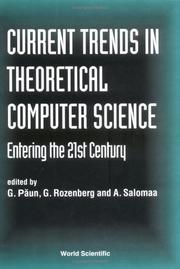
ISBN: 1281951900 9786611951900 9812810404 9789812810403 9781281951908 9789810244736 9810244738 6611951903 Year: 2001 Publisher: Singapore River Edge, NJ World Scientific
Abstract | Keywords | Export | Availability | Bookmark
 Loading...
Loading...Choose an application
- Reference Manager
- EndNote
- RefWorks (Direct export to RefWorks)
The scientific developments at the end of the past millennium were dominated by the huge increase and diversity of disciplines with the common label "computer science". The theoretical foundations of such disciplines have become known as theoretical computer science . This book highlights some key issues of theoretical computer science as they seem to us now, at the beginning of the new millennium. The text is based on columns and tutorials published in the Bulletin of the European Association for Theoretical Computer Science in the period 1995-2000. The columnists themselves selected the mate
Computer science. --- Natural computation. --- Biologically-inspired computing --- Bio-inspired computing --- Natural computing --- Bionics --- Electronic data processing --- Informatics --- Science
Book
ISBN: 9812562494 9789812562494 Year: 2004 Publisher: [River Edge] New Jersey World Scientific
Abstract | Keywords | Export | Availability | Bookmark
 Loading...
Loading...Choose an application
- Reference Manager
- EndNote
- RefWorks (Direct export to RefWorks)
This book is based on columns and tutorials published in the Bulletin of the European Association for Theoretical Computer Science (EATCS) during the period 2000-2003. It presents many of the most active current research lines in theoretical computer science. The material appears in two volumes, "Algorithms and Complexity" and "Formal Models and Semantics", reflecting the traditional division of the field. The list of contributors includes many of the well-known researchers in theoretical computer science. Most of the articles are reader-friendly and do not presuppose much knowledge o
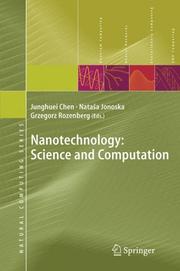
ISBN: 1280613076 9786610613076 3540302964 3540302956 3642067751 9783540302957 Year: 2006 Publisher: Berlin New York : Springer,
Abstract | Keywords | Export | Availability | Bookmark
 Loading...
Loading...Choose an application
- Reference Manager
- EndNote
- RefWorks (Direct export to RefWorks)
Nanoscale science and computing is becoming a major research area as today's scientists try to understand the processes of natural and biomolecular computing. The field is concerned with the architectures and design of molecular self-assembly, nanostructures and molecular devices, and with understanding and exploiting the computational processes of biomolecules in nature. This book offers a unique and authoritative perspective on current research in nanoscale science, engineering and computing. Leading researchers cover the topics of DNA self-assembly in two-dimensional arrays and three-dimensional structures, molecular motors, DNA word design, molecular electronics, gene assembly, surface layer protein assembly, and membrane computing. The book is suitable for academic and industrial scientists and engineers working in nanoscale science, in particular researchers engaged with the idea of computing at a molecular level.
Nanotechnology. --- Microelectronics. --- Molecular technology --- Nanoscale technology --- High technology --- Microminiature electronic equipment --- Microminiaturization (Electronics) --- Electronics --- Microtechnology --- Semiconductors --- Miniature electronic equipment --- Engineering. --- Information theory. --- Computer science. --- Artificial intelligence. --- Cytology. --- Nanotechnology and Microengineering. --- Theory of Computation. --- Computation by Abstract Devices. --- Artificial Intelligence. --- Cell Biology. --- Cell biology --- Cellular biology --- Biology --- Cells --- Cytologists --- AI (Artificial intelligence) --- Artificial thinking --- Electronic brains --- Intellectronics --- Intelligence, Artificial --- Intelligent machines --- Machine intelligence --- Thinking, Artificial --- Bionics --- Cognitive science --- Digital computer simulation --- Electronic data processing --- Logic machines --- Machine theory --- Self-organizing systems --- Simulation methods --- Fifth generation computers --- Neural computers --- Informatics --- Science --- Communication theory --- Communication --- Cybernetics --- Construction --- Industrial arts --- Technology --- Computers. --- Cell biology. --- Automatic computers --- Automatic data processors --- Computer hardware --- Computing machines (Computers) --- Electronic calculating-machines --- Electronic computers --- Hardware, Computer --- Computer systems --- Calculators --- Cyberspace --- Microtechnology. --- Microelectromechanical systems. --- Microsystems and MEMS. --- MEMS (Microelectromechanical systems) --- Micro-electro-mechanical systems --- Micro-machinery --- Microelectromechanical devices --- Micromachinery --- Micromachines --- Micromechanical devices --- Micromechanical systems --- Electromechanical devices --- Mechatronics --- Micro-technology --- Microtechnologies
Book
ISBN: 3540694463 3540694455 3642088937 Year: 2008 Publisher: Berlin, Heidelberg : Springer-Verlag Berlin Heidelberg,
Abstract | Keywords | Export | Availability | Bookmark
 Loading...
Loading...Choose an application
- Reference Manager
- EndNote
- RefWorks (Direct export to RefWorks)
Time-dependent scheduling involves problems in which the processing times of jobs depend on when those jobs are started. This book is a comprehensive study of complexity results and optimal and suboptimal algorithms concerning time-dependent scheduling in single-, parallel- and dedicated-machine environments. In addition to complexity issues and exact or heuristic algorithms which are typically presented in scheduling books, the author also includes more advanced topics such as matrix methods in time-dependent scheduling, and time-dependent scheduling with two criteria. The reader should be familiar with basic notions of calculus, discrete mathematics and combinatorial optimization theory, while the book offers introductory material on NP-complete problems, and the basics of scheduling theory. The author includes numerous examples, figures and tables, he presents different classes of algorithms using pseudocode, and he completes the book with an extensive bibliography, and author, symbol and subject indexes. The book is suitable for researchers working on scheduling, problem complexity, optimization, heuristics and local search algorithms.
Computer science. --- Operations research. --- Decision making. --- Computer programming. --- Computers. --- Algorithms. --- Artificial intelligence. --- Mathematical optimization. --- Computer Science. --- Theory of Computation. --- Programming Techniques. --- Algorithm Analysis and Problem Complexity. --- Optimization. --- Artificial Intelligence (incl. Robotics). --- Operation Research/Decision Theory. --- Optimization (Mathematics) --- Optimization techniques --- Optimization theory --- Systems optimization --- Mathematical analysis --- Maxima and minima --- Operations research --- Simulation methods --- System analysis --- AI (Artificial intelligence) --- Artificial thinking --- Electronic brains --- Intellectronics --- Intelligence, Artificial --- Intelligent machines --- Machine intelligence --- Thinking, Artificial --- Bionics --- Cognitive science --- Digital computer simulation --- Electronic data processing --- Logic machines --- Machine theory --- Self-organizing systems --- Fifth generation computers --- Neural computers --- Algorism --- Algebra --- Arithmetic --- Automatic computers --- Automatic data processors --- Computer hardware --- Computing machines (Computers) --- Electronic calculating-machines --- Electronic computers --- Hardware, Computer --- Computer systems --- Cybernetics --- Calculators --- Cyberspace --- Computers --- Electronic computer programming --- Electronic digital computers --- Programming (Electronic computers) --- Coding theory --- Deciding --- Decision (Psychology) --- Decision analysis --- Decision processes --- Making decisions --- Management --- Management decisions --- Choice (Psychology) --- Problem solving --- Operational analysis --- Operational research --- Industrial engineering --- Management science --- Research --- System theory --- Informatics --- Science --- Foundations --- Programming --- Decision making --- Linear programming. --- Programming (Mathematics) --- Mathematical programming --- Goal programming --- Algorithms --- Functional equations --- Mathematical optimization --- Production scheduling --- Information theory. --- Computer software. --- Artificial Intelligence. --- Operations Research/Decision Theory. --- Software, Computer --- Communication theory --- Communication
| Listing 1 - 10 of 19 | << page >> |
Sort by
|

 Search
Search Feedback
Feedback About UniCat
About UniCat  Help
Help News
News